AllergyConsumerReview View RSS
Carbon Monoxide FAQ 22 Jul 2024 11:06 AM (8 months ago)
Q. What is carbon monoxide, and why should I be concerned about it?
A. Carbon monoxide is an odorless, colorless gas that can be fatal when inhaled. It’s sometimes difficult to determine if carbon monoxide is the culprit because its symptoms are similar to flu and allergies. Low levels can cause nausea, dizziness, weakness, and muscle ache. Higher exposure levels can impair judgement, cause paralysis or coma, and death.
Q. How does carbon monoxide get into the home?
A. Carbon monoxide buildup can occur several ways:
- When flues or chimneys become blocked, so exhaust cannot be vented to the outside
- When a fuel burning furnace has a cracked or rusted heat exchanger, allowing combustion gases into the living spaces
- When fuel-burning space heaters, ovens, ranges, or grills are operated in the home without adequate ventilation
- When car exhaust from an attached garage enters the home
- When combustion equipment is not working properly and causes incomplete combustion
- When there’s a negative pressure balance between the inside and outside of the home, preventing adequate venting of combustion gases
Q. What causes carbon monoxide to build to dangerous levels?
A. Harmful build-ups of these gases can occur when: exhaust from combustion equipment is not vented to the outside of the home, and when combustion equipment is not in good working order and is not regularly inspected for safe operation.
Some homes may have a problem with “back drafting.” That’s when the air pressure inside the home is less than the air pressure outside, causing combustion by-products from furnaces, water heaters, fireplaces, and similar equipment to spill back into the room rather than being vented outside. Back drafting can also occur when natural draft appliance exhaust is pulled back into the house by mechanical ventilation — like a down-draft kitchen power vent.
Q. Is there a way to detect if my home has carbon monoxide build-up?
A. There are carbon monoxide alarms you can install, which will alert you to dangerous levels of carbon monoxide. It is important to choose and place an alarm wisely and maintain it to assure accurate sensing of carbon monoxide.
Q. What signs can help me determine if carbon monoxide is affecting my health?
A. Carbon monoxide may be the problem if you feel bad only when you’re inside the home, and the symptoms gradually disappear after you have left, or if more than one person in the home has similar symptoms. Remember carbon monoxide-related symptoms are like those of the flu.
Q. How can I reduce the risk from carbon monoxide?
A. The most important practice is to keep all combustion equipment well-maintained and inspected for safety.
- Experts recommend having your combustion heating systems inspected by a trained professional every year. Such inspections should look for blocked openings to flues and chimneys; cracked or disconnected flue pipe; signs of soot around openings in your furnace or boiler; rust or cracks in the heat exchanger; soot or creosote build-up; and exhaust or gas odors.
- Always operate combustion equipment for its intended purpose and make sure it has been installed correctly.
- Never use unvented combustion appliances indoors.
Q. Where can I get more information about carbon monoxide?
A. Contact your local Extension Office or your state department of health. The time to take action is now.
The post Carbon Monoxide FAQ first appeared on AllergyConsumerReview.
Living with Your Cat and Your Allergies 28 Jun 2024 9:31 AM (9 months ago)
10 Simple Steps to Cat Allergy Relief
You do not have to give up your cat even if you have allergies or develop allergies. Here are 10 tips to keep your furry friend!
- Use a HEPA Air Purifier

To have an allergic reaction, the cat dander needs to be airborne, and you need to breathe it in. Since cat allergen is so small and difficult to remove, a good high quality HEPA air filter is essential. We have found that the liberal use of a high-grade HEPA air purifier running 24 hours a day is the key to success. I highly recommend the QuietPure or Blueair air purifiers for the best results. - Get a HEPA Vacuum Cleaner
A true HEPA vacuum cleaner sucks up and keeps the cat dander from returning to your environment. Vacuum your whole house weekly. Keep your pets off furniture and remove carpet and area rugs. If possible, let your cat outside to reduce shedding in the house. - Try a Vapor Steam Cleaner
Steam Cleaners are proven by research to be extremely helpful in eliminating the cat proteins/dander that are embedded in your carpets and upholstery. It’s a great, chemical free way of killing dust mites, bacteria, mold and eliminating cat allergens. - Keep Cats Out of the Bedroom
This is where you spend most of your time at home. Keep the bedroom door closed at all times and make this a sanctuary away from your cat. - Wash Your Hands
Always wash your face, hands, and arms after grooming or playing with your cat to remove dander. Never touch your eyes afterwards. - Clean Your Cats
Cat shampoos thoroughly clean your pet and neutralize the allergy-provoking allergens found in their fur, dander, and saliva. They can be found at your local veterinarian’s office. Alternatively, you can use a damp microfiber cloth to rub down the cats’ coat daily to rid it of dander. - Wash Your Linens
Washing your bed and household linens in 140°F water will eliminate both dust mite and cat allergens. Remove clothing worn after grooming or playing with your pet. Keep the clothing, now full of animal dander, out of the bedroom. - Use a Nasal Irrigator
If you have sinus problems because of your cats, use a nasal irrigator and clean out the allergens in your nostrils on a daily basis. This alone will reduce your absorption of allergens by at least fifty percent. - Over Pressurize a Room
Over pressurizing a room will keep out the air with any biological contaminants such as mold, pollen, viruses, bacteria, and cat allergens. In order to positively pressurize a room, air needs to be drawn into the room from the outside (exterior or nearby room) through an exceptionally high-grade HEPA filter, so only pure air reaches the interior of the room. This is also a good way for people suffering from environmental allergies to get fresh air into the home. You can buy an IQAir air purifier and create an over pressurized room. - Get a Siberian Cat
There is a protein in the feline saliva called Fel D1. Siberian cats are free from the Fel D1 protein, and therefore have no dander. Many people find they have no allergic reaction to this type of breed. They are also beautiful long-haired cats!
Get your exclusive 10% off products for your cat allergies at Allergy Buyers Club.
Images are designed by Freepik
The post Living with Your Cat and Your Allergies first appeared on AllergyConsumerReview.
What to Put in Your Healthy Travel Kit 6 Nov 2020 8:29 AM (4 years ago)

2020 has proven to be a difficult year for travel. Both business and leisure trips have been cancelled due to COVID-19 and even a trip to the grocery store can feel risky. The transmission of communicable diseases is always a possibility when traveling, but there are ways to mitigate some risk if travel is necessary. Here’s how to build your own healthy travel kit!
Gather the Basics
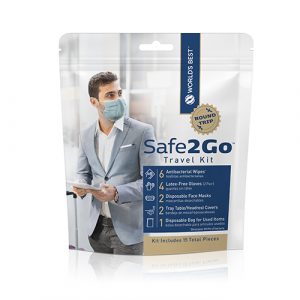 Wherever you may be headed, make sure you have items like masks, disposable gloves, antibacterial wipes, and even tray table covers. The Safe2Go
Wherever you may be headed, make sure you have items like masks, disposable gloves, antibacterial wipes, and even tray table covers. The Safe2Go Airport Travel Kit includes all of this and a few other items in a neatly packed travel kit.
Airport Travel Kit includes all of this and a few other items in a neatly packed travel kit.
Pack Hand Sanitizer
Washing your hands is the most effective way to reduce germs, but that’s not always easy when you’re traveling. Pack hand sanitizer and use it frequently throughout your journey. Puracy Natural Foaming Hand Sanitizer kills 99.9% of germs and is alcohol, fragrance, and cruelty free so you can feel good about using this on your skin.
If you’re planning on air travel, TSA (Transportation Security Administration) is allowing every passenger one liquid hand sanitizer container up to 12oz. in carry-on bags until further notice. Puracy Natural Foaming Hand Sanitizer meets this requirement at 8.5oz.
Wear a Mask
The CDC recommends face masks that cover the nose and mouth be worn while traveling, particularly on buses, airplanes, or other methods of public transit. Most airlines will deny boarding to a passenger if they refuse to comply with the mask requirement.
Safe2Go 3-Ply Masks Pack comes with 50 non-medical disposable masks that meet the CDC’s guidelines for mask-wearing in public. The wire that goes across the bridge of your nose is adjustable to securely fit your face.
3-Ply Masks Pack comes with 50 non-medical disposable masks that meet the CDC’s guidelines for mask-wearing in public. The wire that goes across the bridge of your nose is adjustable to securely fit your face.
Use a Personal Air Purifier
Air purifiers like the FreshAir Personal Air Purifier are ideal for travel! They’re lightweight, use batteries, and typically remove allergy and asthma triggers from your immediate personal space. The FreshAir can be worn around your neck or can stand alone. It uses a built-in ionizer to remove airborne particles and reduce other pollutants around you. Wear it in the car, on an airplane, or just walking around.
Pack Your Own Drinks and Snacks
Traveling usually forces you to purchase food and drinks in convenience stores or airport terminals. Avoid having to make these stops by packing your own snacks and water in your car or checked luggage. Focus on foods rich in nutrients like Vitamin C and be sure to drink lots of water to stay hydrated.
The Pure Company Insulated Water Bottle is a great on-the-go bottle that keeps up to 16oz. of water cold for up to 24 hours. It’s 100% BPA free and has a durable rubber coating on the outside that comes in navy, white, or pink.
Travel Cautiously
Whether you’re driving or flying, take precautions wherever you go to keep yourself safe. Wipe down surfaces before you touch them, keep a distance from others, and always wear your mask.
The post What to Put in Your Healthy Travel Kit first appeared on AllergyConsumerReview.
How to Change Filters in Your Air Purifier 28 Aug 2020 8:07 AM (4 years ago)
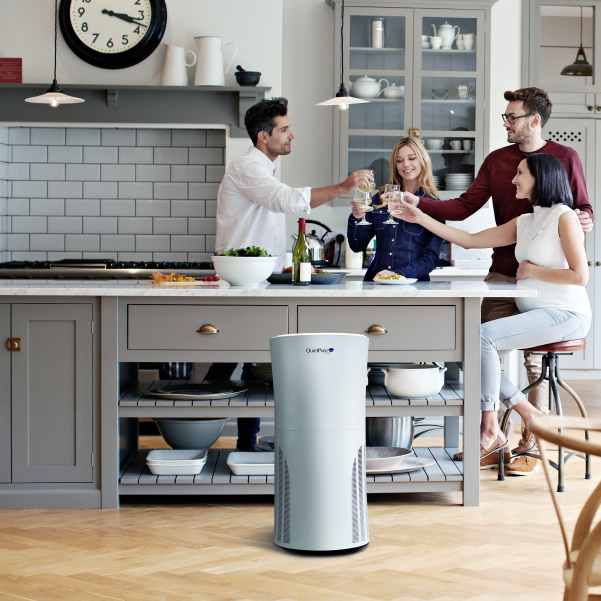 Every air purifier comes with its own maintenance requirements, so it’s important to check your user manual to learn how to care for your purifier. In general, an air purifier is going to have at least one filter that will need to be changed regularly. Every time you go to change out your filter, unplug the air purifier from the electrical outlet for safety purposes and make sure the unit is put back together properly before continuing use.
Every air purifier comes with its own maintenance requirements, so it’s important to check your user manual to learn how to care for your purifier. In general, an air purifier is going to have at least one filter that will need to be changed regularly. Every time you go to change out your filter, unplug the air purifier from the electrical outlet for safety purposes and make sure the unit is put back together properly before continuing use.
Changing an Air Purifier Filter
If your air purifier has a pre-filter, more than likely it will need to be changed monthly, while the actual filter may only need to be changed twice a year. Many air purifier companies offer filter renewal subscriptions that can save you money over time.
Depending on the size of your air purifier and design, access to the filter may be a small door on the back, on the bottom, or even on the side. If your unit has more than one filter, be sure to take note of the proper locations for each filter. Generally, a pre-filter goes around or outside of the main filter.
Here are some examples of how to change a filter on an air purifier from 3 popular brands.
The Pure Company Large Room Air Purifier
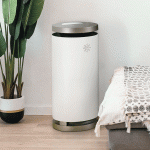 The Large Room Air Purifier uses two filters to offer maximum protection. The Carbon Pre-Filter traps dust and odors in the air and needs to be replaced about every month. The True HEPA Filter captures 99.97% of particles like dander and pollen down to 0.3 microns. It needs to be replaced every 6 months or when the filter change light comes on.
The Large Room Air Purifier uses two filters to offer maximum protection. The Carbon Pre-Filter traps dust and odors in the air and needs to be replaced about every month. The True HEPA Filter captures 99.97% of particles like dander and pollen down to 0.3 microns. It needs to be replaced every 6 months or when the filter change light comes on.
To change the filters, unplug and turn off the air purifier, then unlock the bottom by sliding the latch to the right and finally lift the unit off its base. To replace the Carbon Pre-Filter, simply remove the old one and wrap the new Pre-Filter around the True HEPA Filter. Make sure the Velcro is secured.
To replace the True HEPA Filter, remove the new filter from the plastic bag and repeat the steps for the Carbon Pre-Filter before placing the True HEPA Filter in the designated spot in the Large Room Air Purifier. Place the air purifier back on the base and lock it into place by sliding the latch to the left. Hold down the filter indicator light for 3-5 second to reset it.
QuitePure Home Air Purifier
This HEPA air purifier uses one filter that needs to be replaced every 6-12 months or as needed. The Replacement Combo HEPA Filter Cartridge removes dust, pet dander, odors, allergens, viruses, and bacteria from your indoor air.
To replace the filter, turn off the unit and unplug it. Turn the unit upside down and twist off the large cap on the bottom. Pull out the old filter and discard. Remove the new filter from its packaging and insert into the QuietPure Home. Place the cap on the bottom and twist to secure in place. Turn the unit back over and you can begin operating it again.
Blueair Classic 205
The Blueair Classic 205 air purifier uses a HEPASilent Particle Filter to remove allergens, pet dander, pollen, mold spores, viruses, bacteria, and dust from your indoor air. The filter should be changed every 6 months.
To replace your filter, unplug the unit and open the back door of the air purifier and remove the old filter. Insert the new filter and close the back door. Hold down the filter reset button for 10 seconds, then your air purifier is ready for use.
Final Thoughts
Always check with your user manual before changing a filter. Make sure to buy the right filter that goes with your unit to get the correct fit. Filters are unique to the air purifiers they’re designed for. Proper maintenance is necessary to keep your air purifier running smoothly and increasing its lifespan.
The post How to Change Filters in Your Air Purifier first appeared on AllergyConsumerReview.
Tips to Prevent Mold Growth During the Summer 29 Jun 2020 9:57 AM (4 years ago)
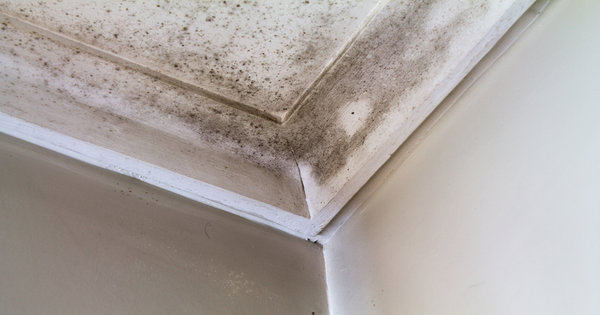
Summertime is full of cookouts, pool days, fun memories, and unfortunately mold. Mold can grow at any time of the year, but many people find it in their homes, basements, and crawlspaces during the summer months. It can be unnerving to find and costly to remove, so preventing indoor mold from growing is important. In preparation for the summer’s increasing temperatures, here are few tips to prevent mold growth.
Control Your Relative Humidity
humidity levels inside your home contribute to how hospitable the environment is to mold. Researchers from the University of Central Florida recommend purchasing a quality relative humidity sensor to continuously monitor the humidity inside your home. These sensors cost about $20. Many dehumidifiers also have built-in humidity sensors that trigger when the dehumidifier needs to turn on and remove moisture from the air. Every region is different, so you’ll need to determine what the right humidity level is for your home based on the area you live.
Remove Vinyl Wall Coverings
While vinyl wall coverings aren’t particularly used in modern homes, older homes may have them. Impermeable surfaces such as vinyl can be a magnet for mold growth as the air flow is restricted and moisture gets trapped. If your walls have vinyl coverings, it’s best to remove them before mold becomes a problem.
Leave Closet Doors Open
Circulating air in your home is important. Unfortunately, closets often remain closed most of the time and the dark spaces inside them are ideal for fungi growth. Try to leave your closet doors open to decrease the chances of mold growing inside. Dark spaces with no air conditioning present are areas to watch out for as well.
Repair Leaks
Whether it’s a small leak or a major one, they’re all cause for concern. Rainwater can leak inside from windows and doors that are improperly sealed. A small drip under the sink can create the perfect environment for mold to grow. Leaking spigots outside of your home are an easy target for fungi looking for a home. Take care of leaks of any size to prevent fungi growth.
Redirect Outdoor Water
Water that’s being directed toward the exterior of your home is cause for concern. Start by redirecting water by keeping sprinklers from spraying near the walls. Install French drains to direct water away from your home. Ensure landscaping doesn’t encourage water to flow towards your home’s exterior. Keep drains and down spouts clear of debris and direct outflow to a suitable area.
Use a Dehumidifier and Air Purifier
Dehumidifiers for mold growth are a great option if you’re concerned about keeping mold from growing and would like to keep the air inside your home void of too much moisture. An air purifier is also a good tool to have to keep mold spores from floating around in your air. We recommend the following products if you’re concerned about mold growth in your home:
The Pure & Dry HEPA Dehumidifier and Air Purifier is a quality 2-in-1 option that can dry your indoor air
and maintain your preferred humidity levels while also removing allergens like mold, mildew, and pollen.
The WhiteWing 70-Pint Dehumidifier with Built-In Pump is a heavy-duty dehumidifier that continuously removes moisture and maintains your preferred relative humidity. This basement dehumidifier is ideal for spaces up to 2000 sq.ft. More sizes of this dehumidifier are also available if you need something smaller or larger.
The post Tips to Prevent Mold Growth During the Summer first appeared on AllergyConsumerReview.
FilterQueen Defender Air Purifier Review 29 May 2020 11:51 AM (4 years ago)
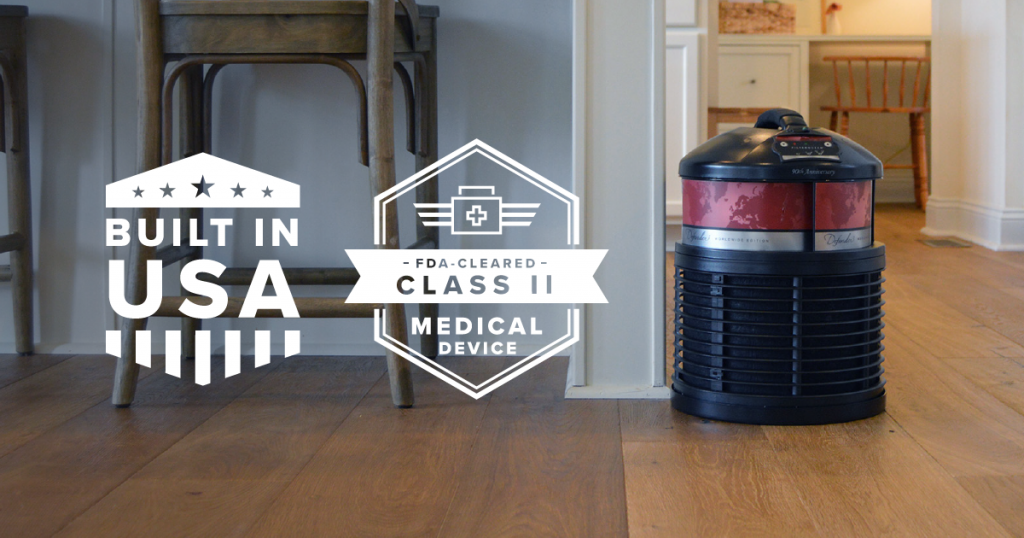
Options are nice to have when it comes to air purifiers, but how do you know which ones are worth your money and meet your needs? We’re reviewing the FilterQueen® Defender® Air Purifier and sharing our thoughts to help guide your air purifier selection process.
FilterQueen® Defender® Overview
The FilterQueen Defender is the only air purifier available on the market that is classified by the FDA as a Class II Medical Device. This makes it incredibly impactful when it comes to purifying the air in your home. It removes 99.9% of particles down to 0.1 microns in size. Three times better than True HEPA filters, the air purifier creates cleaner home environments that protect against harmful pollutants such as viruses, pollen, mold spores, bacteria, pet dander, dust mites, smoke, dander, cooking odors, and VOCs.
Key Benefits
If you’re browsing around for air purifiers that come offer impressive benefits, you’ll be pleasantly surprised with how much the Defender has to offer. Built in the USA, the Defender uses 3-speed programmable operation designed for the level of cleaning you select. It can run for 24 hours a day in near-silent operation without producing any ozone, so you can feel good about using it!
The Better-Than-HEPA Filtration removes hundreds of noxious gases from the air while also targeting allergens like dust, dander, pollen, VOCs, and more. In a Belgian hospital study, the Defender was proven to reduce fungal spores completely within an hour and delivered a significant reduction in particles within the same time.
While not a dehumidifier, the Defender protects against mold growth in damp environments such as basements or spaces up to 700 sq.ft. It also helps eliminate existing problems by cleaning the air of mold spores.
Final Thoughts
This air purifier is a good choice for anyone that has chronic problems like asthma or allergies and needs more than just a basic air purifier. It comes with a 2-year warranty and replacement filters are available for purchase online, so you can feel confident in the longevity and effectiveness of the product.
The post FilterQueen Defender Air Purifier Review first appeared on AllergyConsumerReview.
What You Need to Know if You Live in One of the Allergy Capitals for 2020 22 Apr 2020 1:39 PM (4 years ago)

Spring is here and unfortunately, so are the allergies. Some years are worse than others for many cities and allergy sufferers can be caught off guard. The Asthma and Allergy Foundation of America has released their annual 2020 Allergy Capitals report and the findings are interesting as many cities have moved up and down the list as compared to last year’s allergy report.
Most Challenging Places to Live
- Richmond, VA
- Scranton, PA
- Springfield, MA
- Hartford, CT
- McAllen, TX
- New Haven, CT
- San Antonio, TX
- Bridgeport, CT
- Oklahoma City, OK
- Pittsburgh, PA
Least Challenging Places to Live
- San Jose, CA
- Boise, ID
- Portland, OR
- Fresno, CA
- Milwaukee, WI
- Stockton, CA
- Salt Lake City, UT
- Seattle, WA
- Provo, UT
- Durham, NC
I Live in an Allergy-Prone City, What Do I Do?
For starters, you’ll need to routinely clean your home to remove allergy triggers from your indoor environment. This can be tiresome and even fruitless if you don’t have products that are effective in removing allergens.
Vacuuming should be an important part of your cleaning process. We recommend using a HEPA vacuum that has a sealed system to prevent allergens like dust and pollen from accidentally being re-released into your air. HEPA vacuums typically remove 99.97% of all particles down to 0.3 microns.
Keeping your bedding fresh and clean can also help reduce triggers. Consistently washing sheets, pillowcases, and comforters to remove allergens that may be sleeping with you at night is a great start. We also suggest using a dust mite cover for your mattress to protect it as well as hypoallergenic bedding so you can sleep better at night.
Finally, to simply clean your air of pollen, pet dander, and other allergens, an air purifier for allergies may be a great choice. Air purifiers target a specific amount of square footage, so for a bedroom you’ll only need a small air purifier but in large living spaces, you’ll need an air purifier that targets rooms of that size.
Many air purifiers also reduce VOCs (volatile organic compounds) and even smoke. We suggest making a list of your needs with an air purifier and cross referencing that with the air purifiers you’re interested in.
Feel free to reach out to our Healthy Home Experts at AllergyBuyersClub.com if you have questions. They’re very knowledgeable about each product and how it can help meet your needs.
The post What You Need to Know if You Live in One of the Allergy Capitals for 2020 first appeared on AllergyConsumerReview.
Reducing the Spread of Viruses 17 Mar 2020 11:45 AM (5 years ago)
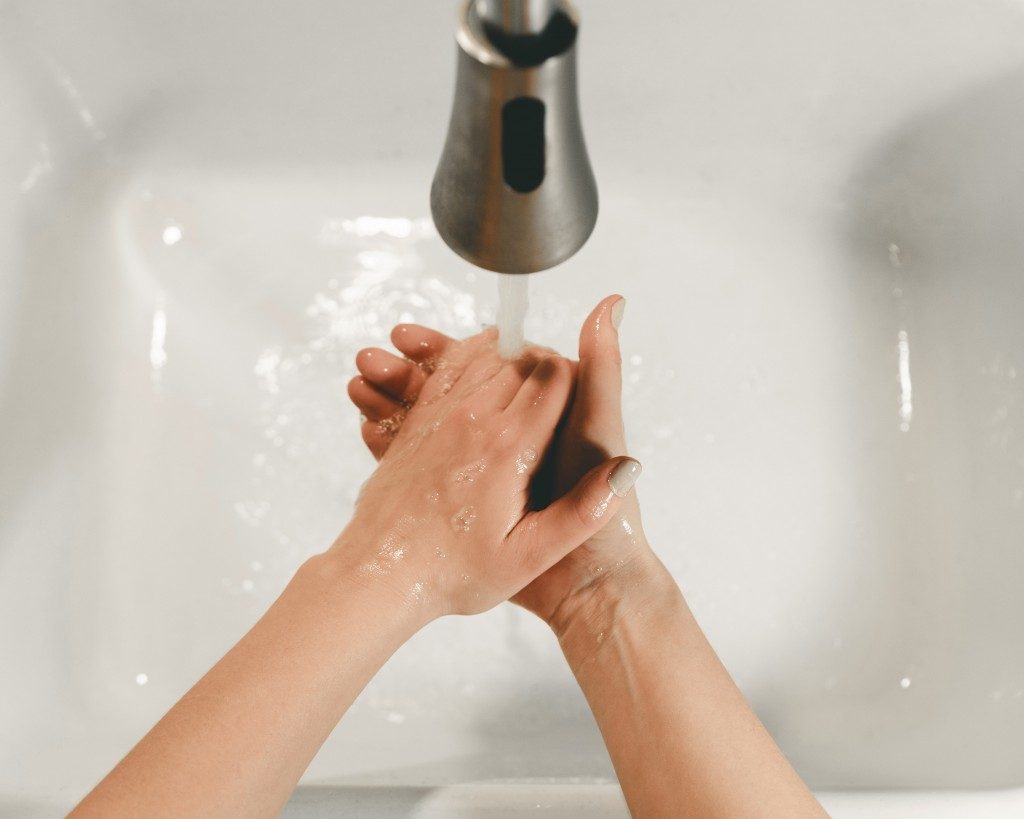
Normally, the month of March is plagued by worries of spring allergies and lingering colds, unfortunately this year the major concern is the spread of COVID-19. While there’s still so much we don’t know about this virus, we can take precautions to keep ourselves and our loved ones healthy and safe. The Center for Disease Control recommends the following steps to prevent illness:
- Clean your hands often: wash your hands with soap and water for at least 20 seconds (particularly when you’ve been in a public area)
- Use hand sanitizer if soap and water is not available. Hand sanitizer must contain at least 60% alcohol
- Avoid touching your eyes, nose, and mouth
- Avoid close contact with people who are sick
- Keep a distance of at least 6 feet between yourself and other people if COVID-19 is spreading in your community
- Stay at home if you are sick (except to get medical care)
- If you are able to work from home, try to avoid the office or work spaces with more than 10 people
- Cover your nose and mouth with a tissue when you cough or sneeze
- Throw used tissues in the trash immediately
- Wash your hands after you sneeze or cough
- Wear a facemask if you are sick and sharing a room or vehicle and before entering a healthcare provider’s office.
- Wear a facemask if you are caring for someone who is sick
- Clean and disinfect frequently touched surfaces daily. This includes tables, doorknobs, light switches, countertops, handles, desks, phones, keyboards, toilets, faucets, and sinks.
Other Supplemental Steps to Take
Air purifiers can help reduce other bacteria in the air that can lead to a weakened immune system. Our Healthy Home Experts recommend the following air purifiers.
Ecosphere Air Cleaner
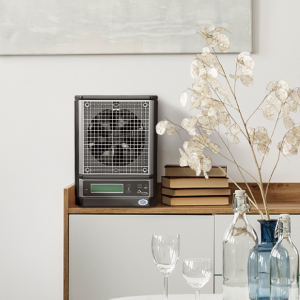
Features:
- Certified Space Technology that uses oxidizers to seek and destroy contaminants
- Cleans spaces up to 3000 sq.ft.
- Ozone-free
- Doesn’t require filters
- Reduces viruses, bacteria, mold, VOCs, smoke, and odor in the air and surfaces
Discover the Ecosphere Air Cleaner
Blueair AllergyGuard
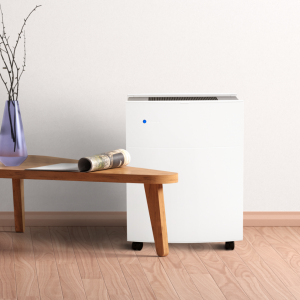
Features:
- HEPASilent Technology combines electrostatic and mechanical filtration technologies to eliminate 99.97% of airborne allergens
- Cleans spaces up to 1550 sq.ft.
- Ozone-free
- Best-in-class Clean Air Delivery Rate (CADR)
Discover the Blueair AllergyGuard Air Purifier
Airfree Onix 3000 Air Sterilizer
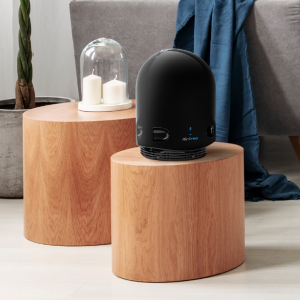
Features:
- Patented ceramic core heats the air up to 400 degrees Fahrenheit to sterilize and eliminate ozone, fungus, bacteria, allergens, and more.
- Cleans spaces up to 650 sq.ft.
- Eliminates 99.99% of all microorganisms
- Does not require filters
- Completely silent in operation
Discover the Airfree Onix 3000 Air Purifier
Airpura UV600 Micro-Organisms Air Purifier
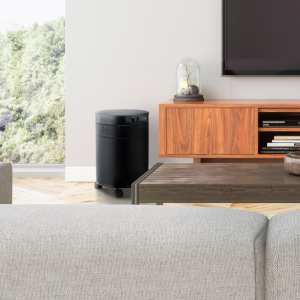
Features:
- Uses an activated carbon filter, a true HEPA filter, anti-microbial filters, and UV lamp
- Cleans spaces up to 1650 sq.ft.
- Traps 99.97% of particles as small as 0.3 microns
- Absorbs chemicals, smoke, and odors
- Cleanable pre-filter
- Ozone-free
Discover the Airpura UV6000 Micro-Organisms Air Purifier
The post Reducing the Spread of Viruses first appeared on AllergyConsumerReview.
Best Selling Humidifiers in Every Price Range 5 Feb 2020 1:45 PM (5 years ago)
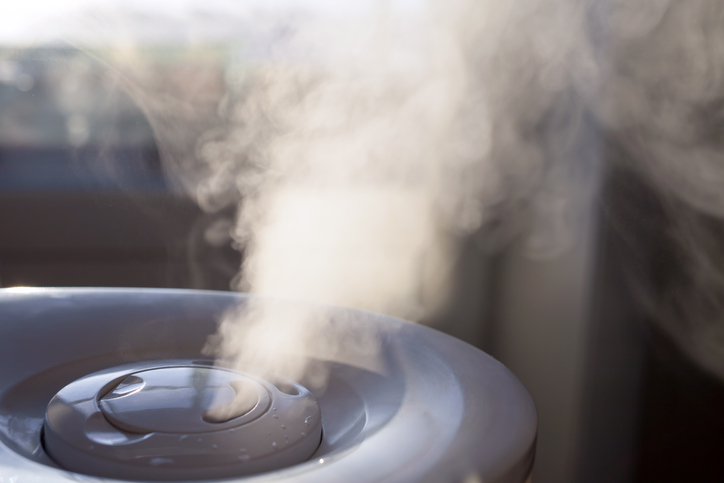
Humidifier season begins in the fall and often doesn’t end until mid to late spring. Many regions of the United States however, maintain lower levels of humidity, making a humidifier necessary year-round. Dry air in your home can cause allergies and asthma to worsen along with other unpleasant problems such as dry skin and even nose bleeds. If dry air is a problem where you live, then a humidifier may be helpful. Here are a few of our top humidifier picks.
PowerPure 5000 Warm & Cool Mist Ultrasonic Humidifier
Ultrasonic humidifiers use high frequency sound vibrations to generate an ultrafine mist that’s expelled into the room. The PowerPure 5000 lets you choose between a warm or cool mist to release into your space. The humidifier covers up to 700 sq. ft. and features a remote control for easier access. Its virtually silent and has a permanent water filter. It’s ideal for someone who:
- Wants a quality humidifier at a reasonable price
- Needs a quiet humidifier to keep in a bedroom or living space
SimpleMist Ultrasonic Cool Mist Humidifier
Similar to the PowerPure 5000, the SimpleMist uses ultrasonic technology to humidify your space. It features a unique aromatherapy element that allows you to scent your home with essential oils while adding moisture to the air. It covers up to 400 sq. ft. and has a top-fill format for no-hassle filling. It’s ideal for someone who:
- Wants a unique humidifier design
- Needs an affordable small to medium-sized room humidifier
- Likes to use essential oils
Boneco S250 Digital Steam Humidifier
Steam humidifiers is exactly what it sounds like. The humidifier heats up the water in it’s reservoir and turns it into steam to release into the air. The Boneco S250 provides bacteria-free steam in spaces up to 430 sq. ft. Unlike many other steam humidifiers, it has a cooling fan that cools the steam before releasing it into the air, making it a good option for people with pets and children. This humidifier is ideal for someone who:
- Wants a safe humidifier to use around their kids or pets
- Prefers bacteria-free humidification
- Needs a humidifier for a bedroom or office
PureGuardian® H8000B 120-Hour Elite Ultrasonic Humidifiers
The PureGuardian H8000B features Smart Mist sensors that take the guess work out of monitoring humidity levels in your home. It’s ideal for rooms up to 700 sq. ft. and features silent operation and filters. It also uses Silver Clean technology to prevent mold and mildew from building up in the water tank. It also has 120 hours of run time between tank refills. It’s ideal for someone who:
- Doesn’t have time to monitor humidity levels or refill a water tank frequently
- Has a large bedroom or living space
- Is concerned about bacteria build up in a humidifier’s water tank
Find the Right Humidifier for You
Allergy Buyers Club offers a variety of best-selling humidifiers to choose from. Browse their wide-selection and even chat with a Healthy Home Experts to find the right humidifier for your home.
The post Best Selling Humidifiers in Every Price Range first appeared on AllergyConsumerReview.
The Worst Cities to Live in if You Have Asthma 17 Jan 2020 11:57 AM (5 years ago)
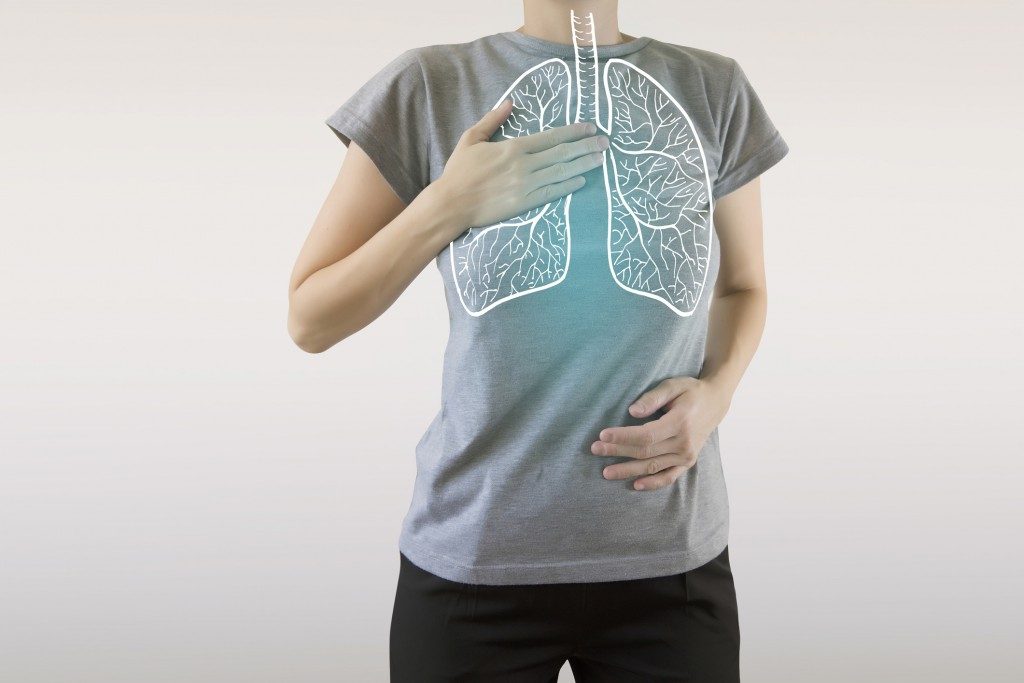
Asthma is a condition that causes your airways to become inflamed and narrow, making it difficult to get a breath. For the 25 million Americans that are impacted by this respiratory disease, it can be difficult to live with and is often made worse in certain regions of the United States.
Every year the Asthma and Allergy Foundation of American publishes a study on the most challenging places to live with asthma. The results for 2019 are in and provide insights into the cities to avoid if you have asthma.
Top 20 Asthma Capitals
- Springfield, MA
- Dayton, OH
- Greensboro, NC
- Philadelphia, PA
- Cleveland, OH
- Allentown, PA
- Louisville, KY
- Boston, MA
- Omaha, NE
- Milwaukee, WI
- New Haven, CT
- Richmond, VA
- Hartford, CT
- Akron, OH
- Jackson, MS
- Columbus, OH
- Louis, MO
- Cincinnati, OH
- Baltimore, MD
- Winston-Salem, NC
Best Air Purifiers for Asthma Sufferers
Since moving isn’t always a possibility for some asthma sufferers, finding other ways to cope is important. An air purifier can often be a helpful addition for your home to prevent many asthma triggers from floating around in your indoor air. Our top picks for asthma air purifiers include the following highly-rated products.
Blueair AllergyGuard Plus
An Allergy Buyers Club exclusive, the Blueair AllergyGuard Plus Air Purifier uses HEPASilent Technology to eliminate asthma and allergy triggers in the air. The technology combines electrostatic and mechanical filtration to eliminate 99.97% of airborne asthma triggers such as dust, pollen, ragweed, mold, and pet dander. Sensors on the air purifier constantly monitor air quality and adjust the fan speed as needed.
QuietPure Home
The QuietPure Home Air Purifier has advanced HEPA (high efficiency particulate air) filtration and a patented turbo charged airflow system that removes allergens, dust, bacteria, viruses, and odors from your indoor air. It also has an optional Carbon VOC filter to help remove volatile organic compounds (VOCs), which are the hardest to remove from the air and are often the worst asthma triggers. It captures 99.97% of all particles down to 0.3 microns.
IQAir HealthPro Plus Air Purifier
The IQAir HealthPro Plus Air Purifier uses HyperHEPA filtration that exceeds the HEPA standards and captures 99.5% of microns as small as 0.003. It features a PreMax large capacity filter that captures larger particles such as pet dander. Finally, a V-5 Cell chemical and odor filter containing 5lbs of coal-based activate carbon removes smells and VOCs from the air you breathe. It’s ideal for spaces up to 1125 sq.ft.
The post The Worst Cities to Live in if You Have Asthma first appeared on AllergyConsumerReview.
